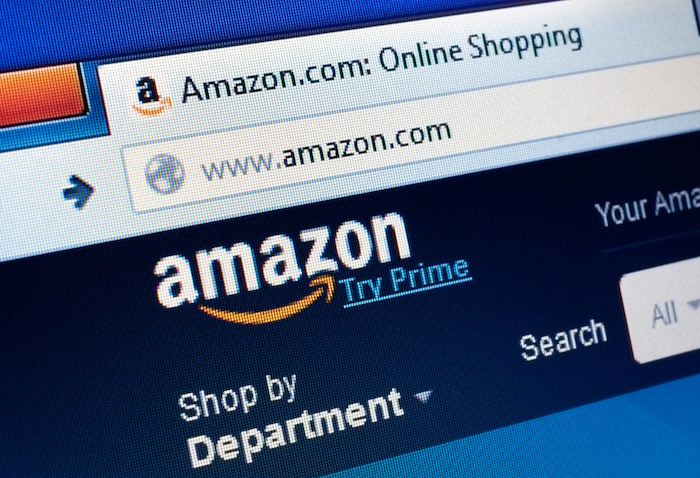
By and large, shoppers have come to accept the foreign experience that is buying clothes online. While there’s no fitting room that lets them get the fit and feel of a dress before they buy and no sales associate to nudge them along all the way, Amazon has managed to soften the edges of buying online with easy returns and a growing selection that’s finally got some consumers looking its way.
Even more important, though, might be the luxury fashion brands that are finally starting to see Amazon as a viable marketplace for their highfalutin’ goods.
The Wall Street Journal has the scoop on the subtle, behind-the-scenes shift taking place among luxury fashion brands, such as Ralph Lauren, Calvin Klein, Kate Spade and Nicole Miller. These brands, once the poster children for resisting assimilation into Amazon’s online retail empire, have begun, bit by bit, to list their wares on the site as if it were another distributor. To hear Lacoste CEO Joëlle Grünberg explain it, the change comes from Amazon’s own willingness to treat high-fashion brands with a lighter price adjustment touch than it does with the rest of its aggressively discounted merchandise.
“Amazon understands fashion is different from its core business,” Grünberg told WSJ. “They discount when products aren’t selling, but they don’t mark down at crazy rates.”
It’s not just a willingness to meet fashion brands halfway — and probably even more than halfway — on principing that has previously antagonistic designers now willing to come to the table. While the top brands can buy up standalone boutique storefronts and sell just fine, many that have relied on sending a steady stream of high-priced tops and bottoms to department stores are seeing those sellers discount as much, if not more, heavily than Amazon’s standard operating procedure. If department stores aren’t discounting their own products, they’re opening offshoot stores that will. Forbes reported in January that the number of off-price brand extensions (i.e., Macy’s Backstage, Saks OFF 5TH) and discount department stores (i.e., T.J.Maxx) skyrocketed 12 percent during 2015 to close at a total of 4,245.
If department stores, once the steady ally of luxury fashion brands, pushed those same partners into Amazon’s arms, then the new marriage is best looked at as one of convenience rather than outright love. Cowen analysts predicted last year that Amazon would overtake Macy’s in retail apparel sales by 2017, so it’s not out of the question that some high-fashion designers are simply choosing their distributors based on where their customers are most likely to buy. However, how those customers are treated, with everything from in-store design and sales associate assistance, has been a cornerstone of luxury brands since their founding.
This is where Amazon has yet to come up with a cogent solution. When a customer shops Gucci, everything from how products are displayed to the way customers are upsold on different products is seen by both brand and shopper as deliberately endemic to Gucci; the same goes for Ralph Lauren, Kate Spade and all the others. What makes Amazon such a flexible retailer, though, is its uniform approach to product display — coffeemakers, running shoes and, yes, handbags are all given the same look, feel and path to purchase. It’s this disconnect between how high fashion wants to sell itself and how Amazon has made billions of dollars that Ben Kennedy, group director of digital at promotional retail firm Integer, believes is giving Web designers at Amazon absolute fits.
“Taking premium brand standards and retrofitting them within a template-ized ecosystem, such as Amazon, is not possible today,” Kennedy told Digiday. “Any effort to do this will risk diluting brand equity. This is a challenge Amazon needs to figure out on behalf of the brand. Is Amazon going to re-imagine how their platform looks to befit the expectation of a premium brand? It’s too early to tell. If they do, it will require a re-architecture to cater to an enhanced aesthetic display.”
To its credit, Amazon has attempted to create a different look and feel for its Amazon Fashion heading; the landing page departs from the standard formula of dozens of products on a scrollable page in favor of a decidedly more advertorial style. Behind that landing page, though, every high-fashion brand’s products are all displayed in the traditional Amazon fashion. Perhaps high fashion could rest easier if customers were given the default option of searching by brand, but not even Amazon Fashion appears ready to deviate from product type as its standard sorting method — not even for its new high-fashion partners.
In this tug of war, someone has to blink first. But with department stores losing much of their cultural cache with younger shoppers and Amazon acquiring or pumping out more private-label fashion brands every few months, it’s not looking good for luxury fashion caught in the middle. But unless better options present themselves, it will be their choice and theirs alone whether they want to go down swinging or be assimilated into the Amazon Collective.